Zenit-E Camera Review — Soviet Bunker

Zenit-E in tones of blue and rust. A color scheme which almost requires one to also put a wallet and watch in the frame. I'm as cheap as this camera though so can't do that.
Continuing with the Soviet Bunker series, I'm reviewing Zenit-E which is a 35mm SLR camera. Not only is it one of the most popular Zenit cameras, it could also be one of the most popular soviet cameras. It yields a M42 screw mount which allows one to mount a vast amount of M42 lenses that exist in this world. Not only are there many soviet M42 lenses, but there are also a lot of other makers. For example many great Pentax offerings.
I got my Zenit-E from a junk sale for 10 Euros. It came with a leather case. Leningrad light meter. And the main reason why I bought this set - Helios 44-2 58mm f2 lens. These cameras are cheap. Even outside junk sales you can get them for $15 - 30. A lens is included in most cases.
I'm not a big SLR shooter and I'm also not the biggest fan of soviet gear. That being said, I wanted to try Helios lens on film and Zenit-E was the best camera I had for the task.
Visual Appearance

Zenit-E camera in all its glory. All the angles are up for display.
Zenit-E is a very simple, brick-like camera with strong angles. It's not going to win any beauty pageants but it's not an ugly camera. Workhorse design seems like a good description. It reminds me of a pair of working boots.
Camera has a built in light meter. It's a selenium light meter that tends to ruin camera looks for me. Not in this case. The way the light meter window is integrated within the camera makes it seem futuristic. For some reason it reminds me of the car from Knight Rider.
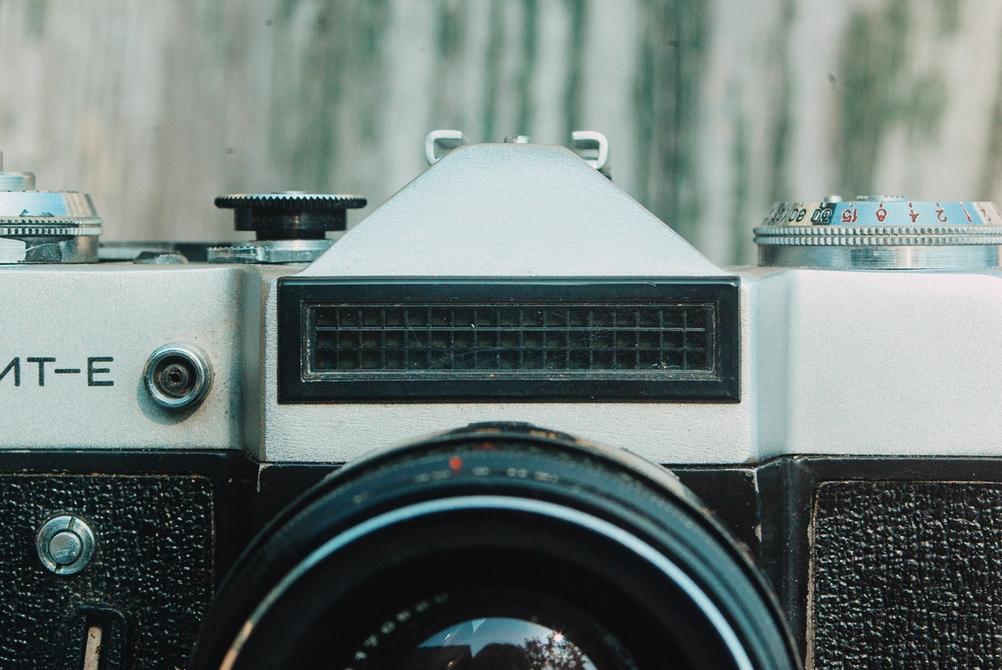
This is the light meter. I can just imagine a red laser going from one side to another within the light meter.
I also like the viewfinder opening. The back of the camera doesn't have many controls so looking there will reveal a big circular opening which is very inviting.
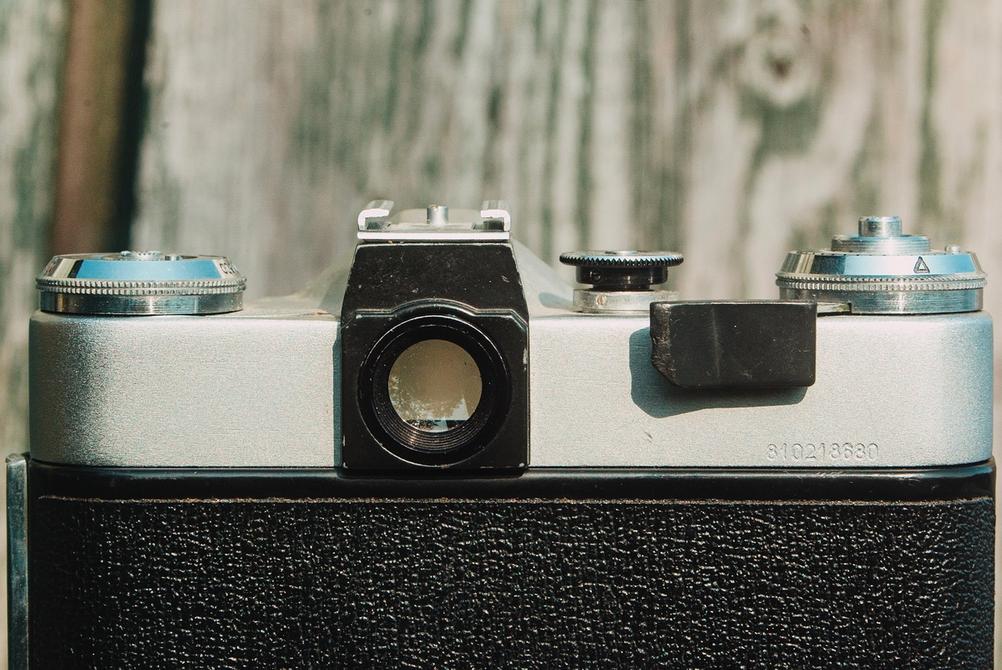
A big opening to allow one to view the world through many M42 lenses.
Feel
Zenit-E is quite heavy. Heavy cameras have a better chance of feeling solid and nice from my experience. This is only half true for the Zenit-E. Whilst the camera is heavy it can feel hollow. That is super weird and I sometimes wonder what gives it the weight.
Feel of the controls range from good to acceptable. I like the film advance lever. Even if it doesn't have the smoothest feel, I like the mechanical click sounds it provides when returning to the initial position. Controls to change the light meter settings feel like grinding metal against metal. Not a good feeling. Shutter speed dial is somewhere in the middle. It's a bit loose but not too bad.
I like the feel of the film rewind button. You need to press and hold it whilst rewinding the film. Pressing it feels like you're moving some heavy lever that will release a few tons of stuff somewhere. Continuing with the rewind theme, I also like how the rewind knob is hidden within the light meter settings control. Push and twist it anti-clockwise and it pops up. Push and twist it clockwise and it seats into its place. It's not an action that's very easy to do but I like it.
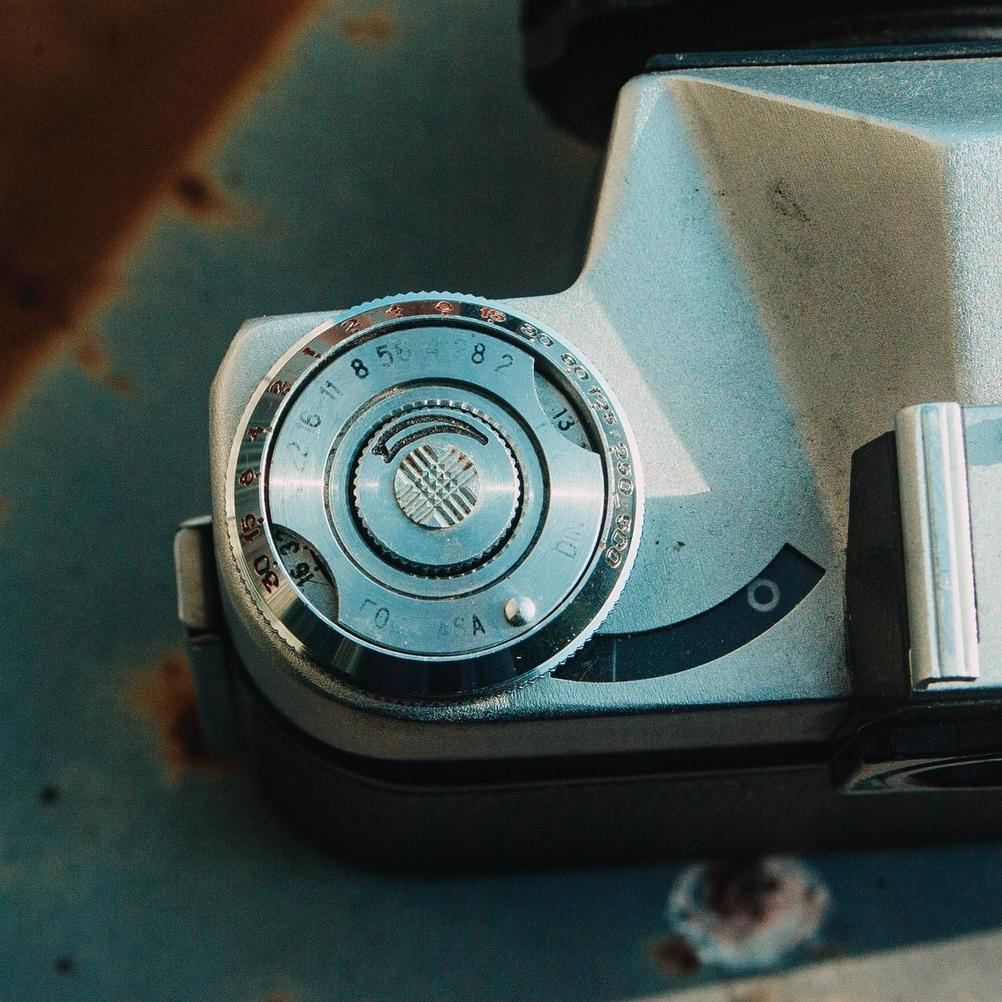
Light meter controls are a set of twisting circles that don't feel good in use. The thing in center is the film rewind knob. Currently it's in the collapsed position.

Here is the rewind knob in its full extension. Magnificent.
Some might complain that it's a knob instead of a lever but I don't mind. Leica M3 also has a rewind knob and it's glorious in use. I've never been in a situation where I have to rewind film as quickly as possible where lever would be more helpful.
The camera feels like it looks. Like a workhorse. It's not very refined but it feels solid enough to boost confidence.
Usability
Think of this camera as not having a light meter even though it does. Camera has an old style selenium meter which will most likely not work in this day and age. There could be some unique copies that still have it working but I see no reason to seek one out. Light meter is uncoupled so you meter light and take the photo in two separate actions. The light meter controls also feel bad to use. External light meter or Sunny16 will offer a much more pleasant experience.
Holding the camera is not the most pleasant thing that one might do with it. It's not shaped in a very ergonomic fashion and is quite heavy so holding it is awkward. There could be perfectly crafted hands for this camera somewhere but they are not attached to my arms. I recommend using a strap.
The viewfinder is quite big although smaller than what the large opening might suggest. It's not dim but it's also not the brightest. You definitely lose some light by looking through it but I haven't found that to be a problem in real life. There are no assists in the viewfinder. Only a fresnel glass screen and I kind of like that. I find that most assists like split-prism are not that useful for me and cause me to miss focus more. Using a good screen is easier to nail focus on a SLR. Screen on Zenit-E is good enough for that.
Frame counter is not fully automatic and you have to remember to bring it to 0 position after loading the new film. I'm the type of person who forgets about these things. It's not a huge issue as I rarely need to know how many shots have been taken or how many are left.
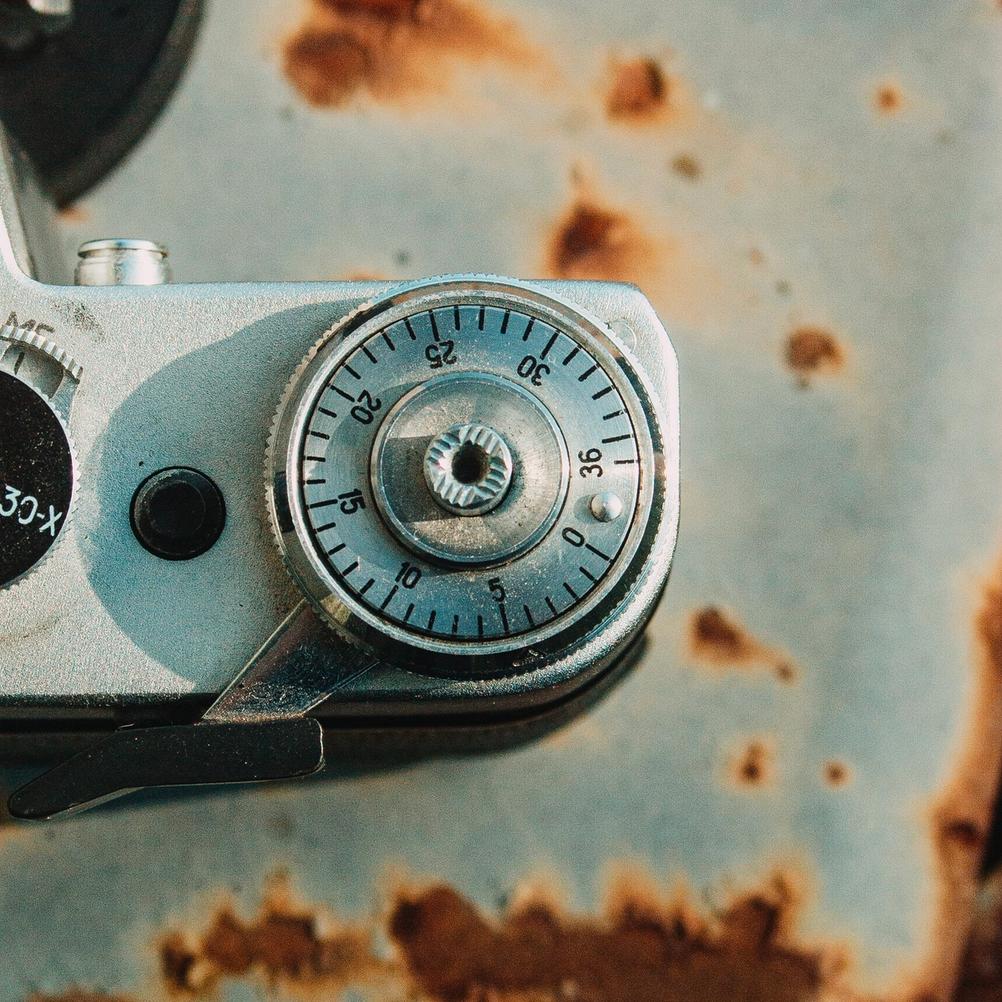
Semi-manual exposure counter with the shutter release button in the middle. Twist it clockwise to zero it out ( or set it to any other number if you wish ).
The black button on the left is the button that needs to be pressed when film is rewound.
Exposure time control is quite tedious to use. It only has 5 shutter speeds ( 1/30, 1/60, 1/125, 1/250, 1/500 ) plus bulb mode. To change the shutter speed you need to lift the dial and turn it to the desired speed. This already means that you have to use at least two fingers for this task. The actual shutter speeds are not spaced equally. 1/125, 1/250 and 1/500 are bunched together so that it's difficult to use them without putting the camera next to your eyes. You can set the exposure time with both a cocked and released shutter. I set the shutter speed with a cocked shutter as the type of control it is makes me feel like it's the correct way to do it. With some cameras you can break the shutter mechanism if you change the shutter speed with a released shutter. That shouldn't be the case for Zenit-E.
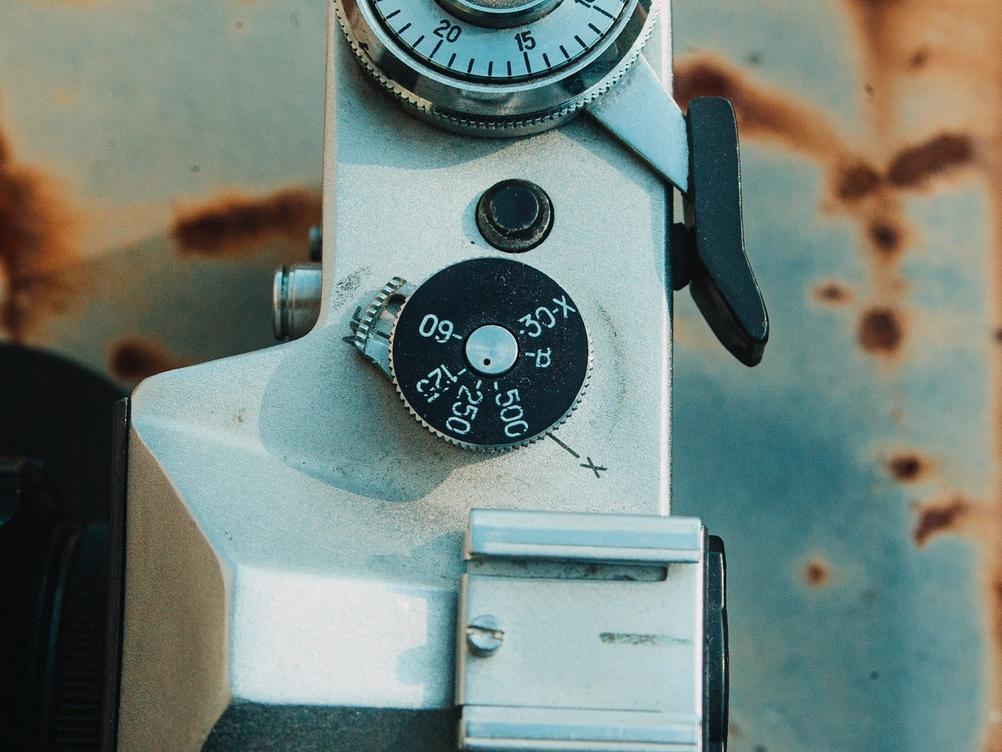
To set the shutter speed you need to align the black dot with the appropriate shutter speed line. Currently it's set to 1/250 of a second.
You can see that the spacing between the 3 fastest speeds is very close. At this macro level it doesn't seem so difficult to set it but when further away from your face it becomes increasingly more difficult.
Loading the film is easy enough as the whole back door opens up and there is plenty of space.
Because it's a camera with no automation you will have to flick between wide open lens when focussing and stop down when taking a photo. This is to have the maximum brightness viewfinder when focussing. A preset lens will make this easier as you'll have a second ring to quickly move between wide open and your chosen aperture. Ah, I miss rangefinders already where I can set the aperture to f22 and it will make no difference to me when composing a shot.
Results
The camera doesn't really impact the final result. Lens and film combination will do that. Zenit-E doesn't have any flaws or features that would impact the final result.
But it makes sense to include at least a few photos taken with this camera...

- Camera
- KMZ Zenit-E
- Lens
- Valdai Helios-44-2 58mm f2
- Film
- Kodak Vision3 50D EI50
- Development
- Tetenal Colortec C-41
- Scanner
- Reflecta ProScan 10T
Don't worry. This light leak isn't the cameras fault. It's the first show from a bulk rolled roll.
This is a shot that I have on almost every film that I load at home. It's the shot to get to the first frame.
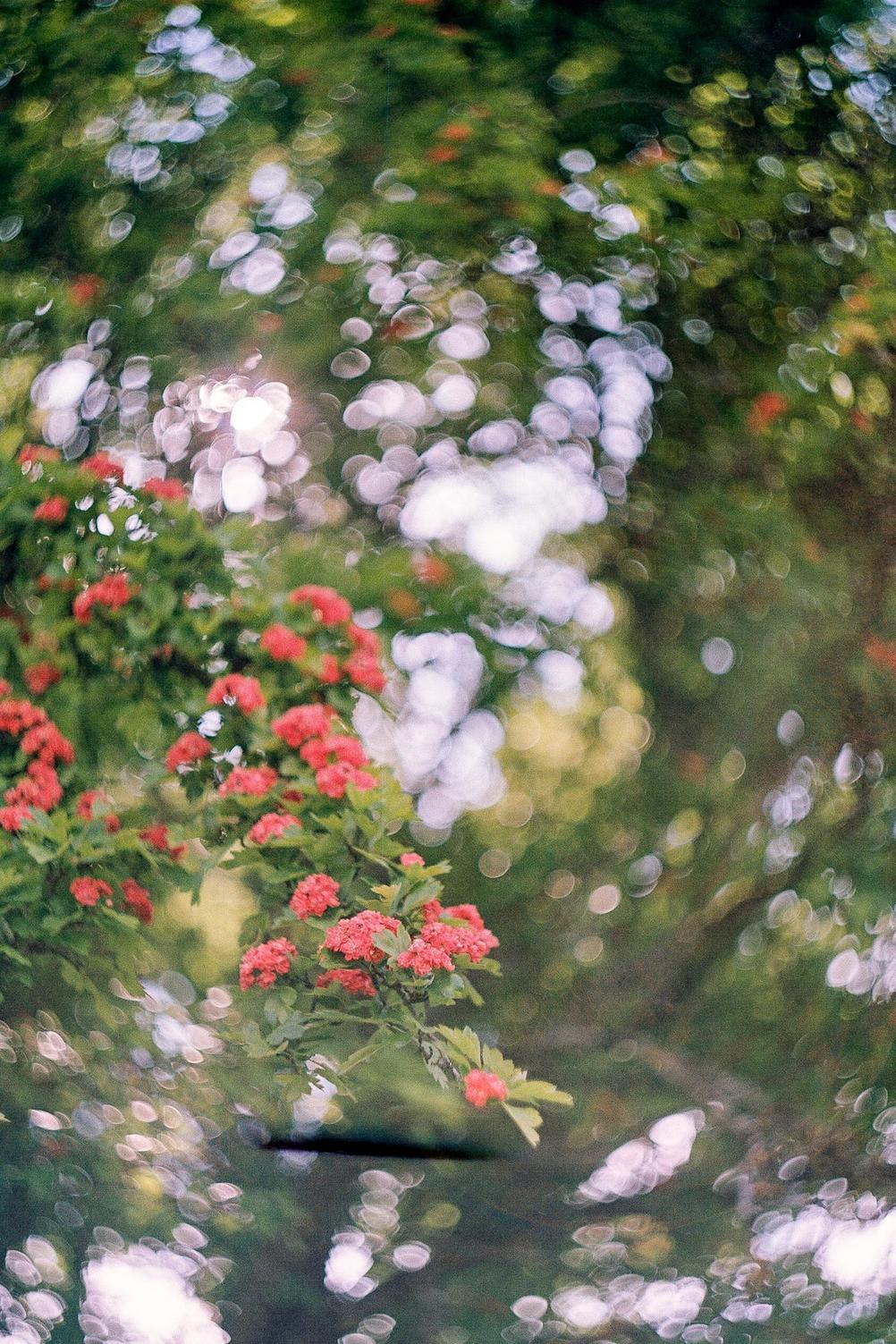
- Camera
- KMZ Zenit-E
- Lens
- Valdai Helios-44-2 58mm f2
- Film
- Kodak Vision3 50D EI50
- Development
- Tetenal Colortec C-41
- Scanner
- Reflecta ProScan 10T
When using a Helios 44 lens your hand naturally will want to frame flowers and things like that. It's one of the humanities basic instincts. Like fight-or-flight response, this is the helios-44-response.

- Camera
- KMZ Zenit-E
- Lens
- Valdai Helios-44-2 58mm f2
- Film
- Kodak Vision3 50D EI50
- Development
- Tetenal Colortec C-41
- Scanner
- Reflecta ProScan 10T
You will also want to frame subjects to place them in a vortex-full bokeh tunnel.

- Camera
- KMZ Zenit-E
- Lens
- Valdai Helios-44-2 58mm f2
- Film
- Kodak Vision3 50D EI50
- Development
- Tetenal Colortec C-41
- Scanner
- Reflecta ProScan 10T
I didn't struggle too hard to get in-focus photos with the Zenit-E. It's not as easy as with rangefinder cameras for me but not too bad. Maybe it have been the SLR viewfinder assists that have been ruining the fun with SLRs for me.
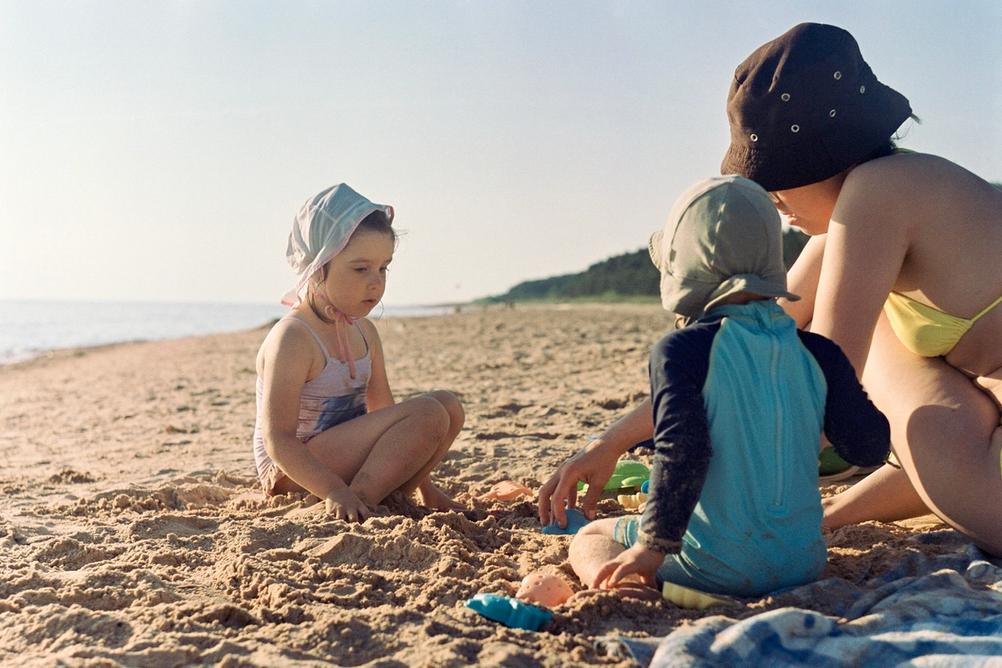
- Camera
- KMZ Zenit-E
- Lens
- Valdai Helios-44-2 58mm f2
- Film
- Kodak Vision3 50D EI50
- Development
- Tetenal Colortec C-41
- Scanner
- Reflecta ProScan 10T
One benefit of having a cheap camera is that you don't have to worry as much when bringing it to a beach where sand will get into every possible location outside and inside the camera.
Final Thoughts
Zenit-E is one of my favourites coming from the soviet world. It has a very simple but effective design that Just Works™. It's not the prettiest. It's not the best to use. But you can use it and feel confident that camera won't get in your way of taking a photo.
It's not a camera that makes me want to pick it up and shoot it but I don't mind using it from time to time. Mostly to get swirly bokeh on film.
It seems like a decent camera to try film photography with. It's cheap and will often come with an interesting lens - Helios 44.
